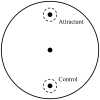Role of Unfolded Protein Response and Endoplasmic Reticulum-Associated Degradation by Repeated Exposure to Inhalation Anesthetics in Caenorhabditis elegans
- PMID: 34220315
- PMCID: PMC8241789
- DOI: 10.7150/ijms.58043
Role of Unfolded Protein Response and Endoplasmic Reticulum-Associated Degradation by Repeated Exposure to Inhalation Anesthetics in Caenorhabditis elegans
Abstract
Background: When an imbalance occurs between the demand and capacity for protein folding, unfolded proteins accumulate in the endoplasmic reticulum (ER) lumen and activate the unfolded protein response (UPR). In addition, unfolded proteins are cleared from the ER lumen for ubiquitination and subsequent cytosolic proteasomal degradation, which is termed as the ER-associated degradation (ERAD) pathway. This study focused on changes in the UPR and ERAD pathways induced by the repeated inhalation anesthetic exposure in Caenorhabditis elegans. Methods: Depending on repeated isoflurane exposure, C. elegans was classified into the control or isoflurane group. To evaluate the expression of a specific gene, RNA was extracted from adult worms in each group and real-time polymerase chain reaction was performed. Ubiquitinated protein levels were measured using western blotting, and behavioral changes were evaluated by chemotaxis assay using various mutant strains. Results: Isoflurane upregulated the expression of ire-1 and pek-1 whereas the expression of atf-6 was unaffected. The expression of both sel-1 and sel-11 was decreased by isoflurane exposure, possibly indicating the inhibition of retro-translocation. The expression of cdc-48.1 and cdc-48.2 was decreased and higher ubiquitinated protein levels were observed in the isoflurane group than in the control, suggesting that deubiquitination and degradation of misfolded proteins were interrupted. The chemotaxis indices of ire-1, pek-1, sel-1, and sel-11 mutants decreased significantly compared to N2, and they were not suppressed further even after the repeated isoflurane exposure. Conclusion: Repeated isoflurane exposure caused significant ER stress in C. elegans. Following the increase in UPR, the ERAD pathway was disrupted by repeated isoflurane exposure and ubiquitinated proteins was accumulated subsequently. UPR and ERAD pathways are potential modifiable neuroprotection targets against anesthesia-induced neurotoxicity.
Keywords: Caenorhabditis elegans; endoplasmic reticulum-associated degradation pathway; inhalation anesthetics; unfolded protein response.
© The author(s).
Conflict of interest statement
Competing Interests: The authors have declared that no competing interest exists.
Figures




Similar articles
-
Melatonin reduces the endoplasmic reticulum stress and polyubiquitinated protein accumulation induced by repeated anesthesia exposure in Caenorhabditis elegans.Sci Rep. 2022 Apr 6;12(1):5783. doi: 10.1038/s41598-022-09853-y. Sci Rep. 2022. PMID: 35388108 Free PMC article.
-
The effect of repeated isoflurane exposure on serine synthesis pathway during the developmental period in Caenorhabditis elegans.Neurotoxicology. 2019 Mar;71:132-137. doi: 10.1016/j.neuro.2019.01.001. Epub 2019 Jan 9. Neurotoxicology. 2019. PMID: 30639121
-
Endoplasmic Reticulum Homeostasis Is Modulated by the Forkhead Transcription Factor FKH-9 During Infection of Caenorhabditis elegans.Genetics. 2018 Dec;210(4):1329-1337. doi: 10.1534/genetics.118.301450. Epub 2018 Oct 4. Genetics. 2018. PMID: 30287474 Free PMC article.
-
ER Stress: A Therapeutic Target in Rheumatoid Arthritis?Trends Pharmacol Sci. 2018 Jul;39(7):610-623. doi: 10.1016/j.tips.2018.03.010. Epub 2018 Apr 23. Trends Pharmacol Sci. 2018. PMID: 29691058 Review.
-
Managing the protein folding demands in the endoplasmic reticulum of plants.New Phytol. 2016 Jul;211(2):418-28. doi: 10.1111/nph.13915. Epub 2016 Mar 14. New Phytol. 2016. PMID: 26990454 Review.
Cited by
-
Neuroprotective effect of erythropoietin on anesthesia-induced neurotoxicity through the modulation of autophagy in Caenorhabditis elegans.Korean J Anesthesiol. 2024 Jun;77(3):384-391. doi: 10.4097/kja.23789. Epub 2024 Feb 15. Korean J Anesthesiol. 2024. PMID: 38356139 Free PMC article.
-
Melatonin reduces the endoplasmic reticulum stress and polyubiquitinated protein accumulation induced by repeated anesthesia exposure in Caenorhabditis elegans.Sci Rep. 2022 Apr 6;12(1):5783. doi: 10.1038/s41598-022-09853-y. Sci Rep. 2022. PMID: 35388108 Free PMC article.
-
Methylene Blue Pretreatment Protects Against Repeated Neonatal Isoflurane Exposure-Induced Brain Injury and Memory Loss.Mol Neurobiol. 2024 Aug;61(8):5787-5801. doi: 10.1007/s12035-024-03931-0. Epub 2024 Jan 17. Mol Neurobiol. 2024. PMID: 38233687
References
-
- Lin EP, Lee JR, Lee CS, Deng M, Loepke AW. Do anesthetics harm the developing human brain? An integrative analysis of animal and human studies. Neurotoxicol Teratol. 2017;60:117–28. - PubMed
-
- Andropoulos DB. Effect of Anesthesia on the Developing Brain: Infant and Fetus. Fetal Diagn Ther. 2018;43:1–11. - PubMed
-
- Walters JL, Paule MG. Review of preclinical studies on pediatric general anesthesia-induced developmental neurotoxicity. Neurotoxicol Teratol. 2017;60:2–23. - PubMed
-
- McCann ME, de Graaff JC, Dorris L, Disma N, Withington D, Bell G. et al. Neurodevelopmental outcome at 5 years of age after general anaesthesia or awake-regional anaesthesia in infancy (GAS): an international, multicentre, randomised, controlled equivalence trial. Lancet. 2019;393:664–77. - PMC - PubMed
MeSH terms
Substances
LinkOut - more resources
Full Text Sources
Medical
Research Materials

